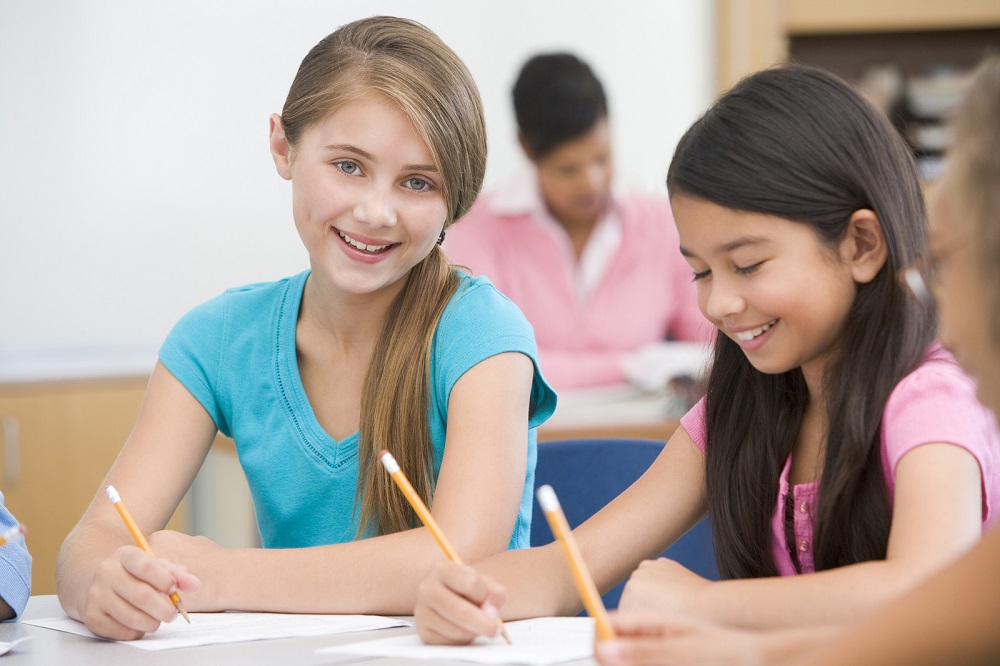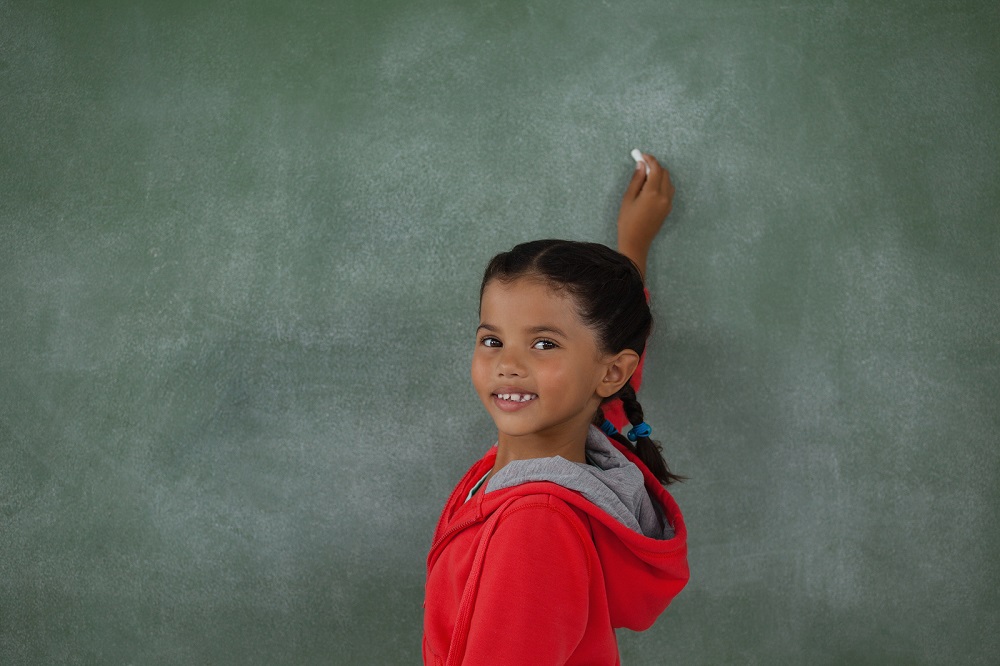11 Ways to Make Every Student an Engaged Learner
10/23/2017

When I went back into the classroom, I found myself having an easier time with behaviors, creating my learning environment, and keeping myself and my students organized. As a first year teacher 24 years ago, these were the areas that kept me up at nights and became objects of my obsessions for the first third of my career. Once I was in a different role for my district that had me analyzing student behaviors and their triggers, taking data and writing performance goals with teachers and students, those pieces became so much clearer to me with every classroom I went into to assist. I had discovered the importance of deliberate lesson planning, planned and purposeful questioning, activities, and even student placements around the room. When I became Nationally Board Certified, I found myself reflecting on everything. It seemed to me that nothing should happen in a classroom without purposeful reflection of the benefits of its use. For example, if I am planning an activity for the students to go through a social studies chapter, why am I doing that? Is partner reading of the chapter an effective way for them to process the information, or is there a better way, or am I simply assigning that because I was not as prepared as I hoped to be for this lesson? What do I do about the kids who are passively sitting there not really engaged in any content? Now that I am back in the classroom for the first time in eleven years, what keeps me awake is the goal to engage every student to ensure they will make one year's growth in one year's time. I am focused on learning the curriculum deeply enough so that I can plan effective lessons for my students to get the most out of them. I lay awake most nights worrying I did not put enough time into planning and creating materials to best help my students learn the materials.
What I discovered, quite by accident, was the best way to begin thinking deeply about the content I was presenting, was to think about the ways I would have students demonstrate what they learned and what higher order thinking skills they used to process the information. By analyzing how I would have them demonstrate, I found I needed to think about what topics or standards I would be focusing on for the coming week. Then I would reflect on what big ideas and concepts I hoped my students would take away from the lessons. Finally, I would process the best way to get my students to show me they understood, internalized, or analyzed the concepts being taught. This helped me plan better lessons, analyze my content to present, and provide opportunities to engage all my students in demonstrating what they had learned. Teaching fifth graders required me to come up with different options to meet different learning needs in my classroom to demonstrate understanding. I had to keep my instruction short and purposeful and give all my students a variety of different opportunities to engage and think deeply about what was being presented. The following 10 strategies came from the book, Total Participation Techniques: Making Every Student an Active Learner, 2nd Edition that Persida and WIlliam Himmele wrote in 2017. These ten strategies were helpful for me to get started using right away with minimal creation of materials. This was critical as I was overwhelmed at being back in the classroom and learning curriculum along the way with my students.
#1 Think-Pair-Share
This proved to be the easiest technique to implement. There was no prep and I could use it in a deliberate manner where I planned ahead of time when to insert this processing method, or I could simply read the engagement in the room during the lesson and insert as needed when the engagement dropped. I can use this technique multiple times a day and with every subject. To make this successful, I always ask my students to reflect on some question, topic or prompt and then I give them some quiet time to process their answer. This may be anywhere from 30 seconds to a minute. I then ask them to discuss their responses with their partners. I like to use shoulder partners, or I also have a variety of different preplanned partners that we use so they can work with a variety of classmates. By having different sets of preplanned partners, I can help facilitate levels of necessary support for some of my challenged learners, my students with mental health issues and my many gifted learners. I try to make sure I ask open ended questions, questions that require students to analyze different points of view, compare and contrast, or prove something they believe or discovered. This has proved to be one of the easiest ways for me to get all students discussing the content. This also allows me to hear their learning and where they are at in terms of mastering the content we are discussing.

#2 Quick-Writes
I like to use this technique hand in hand with Think-Pair-Shares because it gives my students time to process their thinking. By allowing my students time to process their thinking, I am ensuring that I can get some of my students reflecting below the surface level of the content. That quiet reflection allows them to process more deeply the content and their reaction to it. I find that their discussions are deeper, taken more seriously and often times more on task than simply turning and sharing. I have a ton of papers that are pre-made with a spot for student's name, the date and the topic in the heading. Then there is a blank space that is good for a few sentences, since this is a short 3 minute activity for them to write and organize their thoughts. I can collect these and analyze their thought processes as well. The way I use it is I first select a prompt or topic for them to address. For example, "How might things be different for Auggie if he never went back to school after Halloween?" I then give my students about three minutes to to collect their thoughts and write down a response. Finally, I follow up with a Think-Pair-Share or other technique to share their Quick-Write response. By providing opportunities for my students to interact and listen to their peers helps them stay engaged, interact more deeply with the content, and take ownership for their learning.
#3 Quick-Draws
These are opportunities for students to demonstrate their understanding of an abstract term or concept by representing it in a drawing (Himmele & Himmele, 2009). I love to use this technique with my students who have writing as a behavior trigger. By offering for them to use the Quick-Draw instead of the Quick-Write, I can get better participation out of them without setting them off or shutting them down during the lesson. This strategy also forces me to analyze my content to discover the big ideas or major concepts for the students to learn and then I have them reflect on that big idea and create a visual image that represents that concept. This usually takes 3-5 minutes for students to formulate a picture. I model a lot at the beginning with this to help my fifth graders understand I am not interested in the "art" of the picture but the understanding of the concept being presented. This usually helps those fearful of being a "bad artist". I then have students share and explain their images with a partner, in a group, or in a whole group technique that I will explain later. When I do my lesson planning, I ask myself, "Is there a concept I will be presenting where it would be helpful for my students to pause and synthesize their deeper understandings in the form of a visual representation?" This helps me create prompts during my lessons to get to those big ideas for students.
#4 Quick-Draw Gallery Walks
These allow for students to share their Quick-Draws and to look for themes and similarities. I have the students first draw their images and then write a word or two explaining how it connects to the content we learned. Then the students hang their Quick-Draws in their designated space around the room. Students grab their clipboards with paper and they walk around the room and take notes on what they see that is in common or an ah-ha they discover in their observations. We then share out what themes or common threads they found walking through the room that they did not think of in their own drawing.

#5 Chalkboard Splash
The whole group participation activity my students love when I use it. The idea of coming to the board, whether it be my dry erase board or my interactive board,is a favorite of my students as they love coming up to share their thinking. This one is very popular in my classroom and I use it almost everyday as it works with every subject. I have asked questions such as, "What is the most difficult part of being a reader for you? What do you do to work on that area during your Read to Self time?" "What do you think the main character will wish for in the next chapter?" "What is the most important thing you learned in today's math lesson?" I have also divided my boards into sections with the names of the Explorers coming to the new lands. I then ask the students to think about their responses quietly for 30 seconds to a minute and then they move to the boards to record their responses. Some students write their answers and some draw their answers. If they are writing, I give them a 15-20 word limit since I want this to be brief. They then move around the boards with their clipboards again and analyze other's responses. I like using a debriefing form that has three columns. The three columns are labeled Similarities, Differences, and Surprises. I use the form from Himmele's book and it helps my students focus their analysis of other's responses. They then get into one of their small group configurations that was already set up way before this lesson and they begin sharing out about what they recorded on their debriefing form.
#6 Thumbs Up When Ready
This allows all students to stay engaged in the discussion and not check out when a couple hands go in the air. It also allows my quick responders to pause and formulate deeper answers because they are not trying to be first with their hands in the air. I ask students to reflect on a prompt or question and I tell them when they have a thought or are finished they should put their thumb up and then I know that they are ready. I have them keep their thumbs against their chest rather than in the air as I have kids shut down the minute a student puts a hand up. When all thumbs are up against their chest, I use a Think-Pair-Share technique to allow students time to share what they know.
#7 Processing Cards
Another technique that allows students to stay engaged in the lesson and process at their own pace. I have pre-made cards that I laminated myself over a weekend that say Ready to Share on one side and Still Thinking on the other. I have a yellow dot on the Still Thinking side and a green dot on the Ready to Share side. Kids will show the card of the stage they are in and as they complete their task, they flip the card to the Ready to Share side. My early finishers always have to write or draw a sentence or two that justifies their response while they are waiting for others to finish the task. We then share out in partners, Chalkboard Splash, or small group.
#8 Similes
Compare two unrelated things. Similes can provide opportunities for abstractly portraying the big picture of concepts in a way that sums up their meaning (Himmele, 2017, page 52). I find this one difficult for my fifth graders, especially at the beginning of the year. They need scaffolding and I am still doing this as a teacher directed model. I am hoping as I continue to model, they will be able to eventually do this with less support. I provide sentence stems such as "Thomas Jefferson was like___________ in that______________." Eventually students will create similes using a topic we are studying. Then they will formulate an explanation for how the simile might be true and then they will share in small groups or partners or in a Chalkboard Splash. We are currently still modeling similes in a guided lesson and sharing out our reactions in Chalkboard Splashes.
#9 Ranking
This is an activity that requires students to analyze the parts of a topic I am teaching and then justify their reasoning for the rankings. We did a science experiment where we could choose from a list of items to help us make the experiment successful. I had the students rank the tools provided and they had to justify why they ranked the items the way they did. The rich discussion that followed in their small groups was powerful in developing their processes to make decisions. You can have them start working on their own to develop their reasonings for ranking items, paragraphs, steps, events, or concepts according to criteria you have set up for them. After they complete the activity on their own, you can have them Pair-Share how they ranked and justified their rankings. This allows them to process with others and gives them a chance to change their rankings if they hear new information they had not thought of before.
#10 Numbered Heads Together
This allows all students to be held accountable for being able to participate in a group and be responsible to the information that was learned during a lesson. I love this one because all my students have to participate and engage during an activity because they are all responsible to the information. I have found during the first few weeks of school that only a few raise their hands and everyone else sits back and lets them do the work. This changes that for my class and I am getting great feedback and engagement from students who once just sat passively and did not participate but did not sabotage the lesson either. Now they are listening and being responsible to the information because they do not know who will be responsible to reporting out to the group. The process works by placing kids in predetermined groups and before they start the activity they are assigned a number usually between 1 and 3 or 1 and 4. I have them all confirm what number they are by standing up when I call the ones or twos etc. This helps prevent number changing later. I let the group members know they will all be presenting the group's information. They then begin working on the task and they work together to make sure everyone in the group knows the information and can speak to the information. Only after the activity is completed and we are on the debriefing portion of the activity do I call out a number to speak for the group. They have already worked together to make sure everyone is on the same page so even my most anxious feel prepared if their number is called during the debriefing.

#11 Thumbs Up/Thumbs Down Vote
This is a quick technique that I use frequently. I use it to gauge how their understanding of a lesson is coming and where their confidence level is at with a concept or topic. I also use it when I present an opinion or a prediction or a hypothesis and have them tell me if they agree or disagree with me. We then Pair-Share why they agree or disagree. I will also have them do a Quick-Write to gather their thoughts as to why they agree or disagree. To be most effective, I wait until every student has voted. This technique works really well with prompts that can be either true or false depending on the justification that is provided. It also helps students develop their thinking and reasoning skills. I have found it creates rich discussion because students love sharing why they chose a certain way.
These strategies have helped me engage deeply with my curriculum that is new to me in my new job. These specific techniques require little or no prep which has been very helpful when I am overwhelmed at preparing in so many other areas. In addition, it helps me make sure that everyone in my class has a part in what we are doing or studying. I have to be deliberate in planning to put these pieces into my daily lessons because I find if I do not actively think about it, it does not happen and only a few students then end up engaging with my lessons. I can create what I feel is the best lesson, but if most of my students are not engaging with the lesson then my wonderful lesson is only wonderful to me. These total participation techniques help my students engage, help me deliberately plan, and helps increase the learning that happens daily in my classroom.
- A 5th Grade Teacher’s Guide to Surviving October - October 10, 2018
- Dear Students… Here are the 5 Big Ideas I Hope You Learned This Year - May 21, 2018
- 11 Strategies to Encourage Students to Own Their Learning - January 19, 2018










